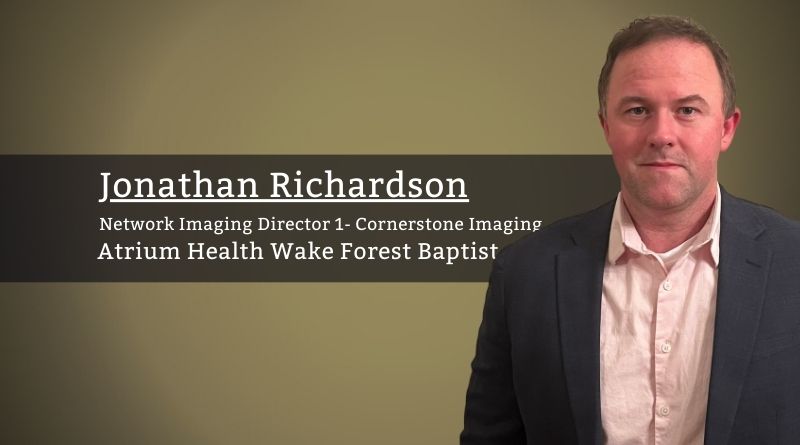The Bidding War for Staff, How Do We Weather the Storm?
By Jonathan Richardson, Network Imaging Director 1- Cornerstone Imaging, Atrium Health Wake Forest Baptist
If you have worked in healthcare for even the smallest of time, you are aware of the nursing shortages, and the movement to travel nursing resulting in much higher wages. This has made the organization profit margins slim, or even fall into the red. What’s not captured in the headlines as much is the shortage of imaging technologists, primarily MRI, CT, X-ray, and mammography. While not as critical as nursing shortages, organizations are scrambling to offer similar sign-on bonuses, higher wages, or better hours in hopes to lure new technologists in, avoiding low staffing, or paying higher traveler cost. However, this comes at a heavy costs both financially and morale.
Because of a fierce competitive job market, technologist who are unhappy for any reason, including pay, fair treatment, hours, or management treatment can easily find a new job without the need to relocate. Not only does this happen between organizations but often between departments within the same organization. The biggest question is, how do we retain staff at reasonable wages, and hours for both the staff member and the organization?
Everyone has seen the jokes about management and pizza parties being “the best we can do”, however what employees don’t understand are the high cost and at times low payments for imaging studies. Sitting down with staff during meetings is a great way to improve transparency and bring to light the high cost and number of staff it takes to run a successful imaging department. Many employees have heard of the gross charge for an exam, and associate that with an actual payment which of course is vastly different. Hospitals struggle to collect 25% of what they charge while outpatient centers are better but still around 35-40%. To help simply that, providing an average payment for a particular study can be useful. For example, if a study pays $200, show the staff how far that money goes, not only for their pay, but the pay of the check-in person, the staff who performs prior authorizations, and equipment repair. CT tube, or mammo detector replacements can run over $100,000 easily, not including labor. Not only will staff be thankful for the education and knowledge, but they will also gain respect for the challenges we face as healthcare leaders.
The biggest question today, how do we retain staff at reasonable wages, and hours for both the staff member and the organization?
Another challenge leader’s face are internal bidding wars, between different facilities inside one large organization. X-ray or other commonly used modalities can often bounce around from hospital to outpatient centers within the same organization and at times receive a pay increase. This is a two-fold issue with the first of losing the staff, and the second being a morale hit to the current department. As many of us know, employees do often communicate their pay to one- another, making it difficult for leaders to keep morale up. Keeping open lines of communication between leaders and having a simple agreement no pay increases for lateral moves can help both keep staffing levels in hospitals sufficient and morale at the desired level for your team. Directors, or VPs should be mindful of these issues and stress a consistent pay practice across the organization.
While internal transfer do happen, the main concern is losing staff to outside organizations. How to slow down the bidding war to hire staff? Many organizations are already providing internal bonuses, and higher annual raises, but are still seeing employees exit for even more money. While staff mostly cite this as the reason for their departure, it is often deeper than financial reasons. Every employee, even outside healthcare has different needs from their leader. Some love one-on-one time for a meeting, while others may just enjoy a simple coffee every-so often. Leaders must almost keep a diary on their staff, recording what helps motivate them to go “above and beyond.” Knowing how employees like to be appreciated or engaged goes a long ways with staff, and can make them second-guess a move to another organization for a modest pay raise. Using e-cards, emails, or just praising a staff member individually vs. group goes a long ways to help staff feel wanted. Rounding daily but not only by the direct manager but by senior leadership help staff feel more engaged, and enjoy sharing their experiences or concerns with higher level leadership.
Increasing new grads through technical schools is another way to hire for growth, or staff vacancies. With the work population at a higher age, improving access for students to train has never been more important. Healthcare organizations must work with their local education systems as early as high school to get students interested in imaging, and invest in clinical training for those at a technical school. Going to career fairs, is a great way to show all that imaging has to offer, with so much focus on nursing, imaging departments must show the benefits of becoming a technologist, such as hours, patient mix, and advanced technology.
Since there is no one solution for every imaging site, leaders must use their best judgement with staff retention. However, continuing to increase pay without regard to fair practice pay, staff morale, or profit margins will place a strain on healthcare systems, limiting capital, or increasing staff volumes. Keeping an open dialogue with current staff members is critical, ensure that employees who do have an offer from another organization look at the “total picture,” including benefits, layoff history of completing organizations, and work/life balance. Sometimes putting things in perspective helps staff see the grass isn’t greener on the other side.



